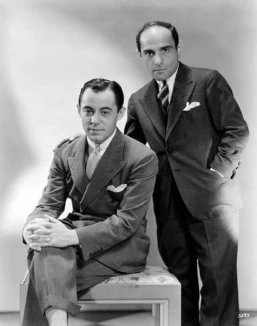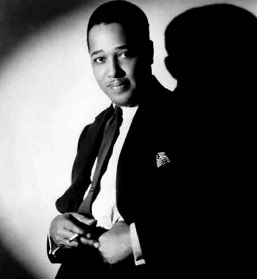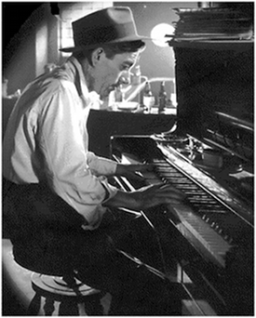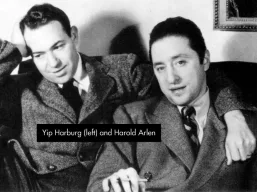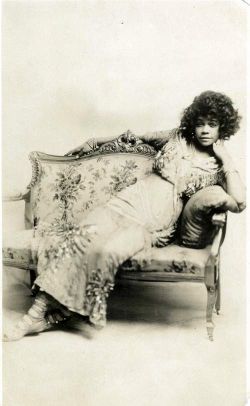Jazz Age
____________
Original Dixieland Jazz Band – The original members formed the band in 1916. ODJB is credited with being the first to record jazz commercially and to have hit recordings in the new genre, The term in the name was originally “Jass” rather than “Jazz” but the label of an early Victor recording of “Tiger Rag” shows it had been become “Jazz” by 1917.
From Wikipedia (image added):
 On March 3, 1916 the musicians began their job at Schiller’s Cafe in Chicago under the name Stein’s Dixie Jass Band. The band was a hit and received offers of higher pay elsewhere. Since Stein as leader was the only musician under contract by name, the rest of the band broke off, sent to New Orleans for drummer Tony Sbarbaro, and on June 5 started playing renamed as The Dixie Jass Band. LaRocca and Nunez had personality conflicts, and on October 30 Tom Brown’s Band and the ODJB [sic] mutually agreed to switch clarinetists, bringing Larry Shields into the Original Dixieland Jass Band. The band attracted the attention of theatrical agent Max Hart, who booked the band in New York City. At the start of 1917 the band began an engagement playing for dancing at Reisenweber’s Cafe in Manhattan. [read more]
On March 3, 1916 the musicians began their job at Schiller’s Cafe in Chicago under the name Stein’s Dixie Jass Band. The band was a hit and received offers of higher pay elsewhere. Since Stein as leader was the only musician under contract by name, the rest of the band broke off, sent to New Orleans for drummer Tony Sbarbaro, and on June 5 started playing renamed as The Dixie Jass Band. LaRocca and Nunez had personality conflicts, and on October 30 Tom Brown’s Band and the ODJB [sic] mutually agreed to switch clarinetists, bringing Larry Shields into the Original Dixieland Jass Band. The band attracted the attention of theatrical agent Max Hart, who booked the band in New York City. At the start of 1917 the band began an engagement playing for dancing at Reisenweber’s Cafe in Manhattan. [read more]
_____________________
Tiger Rag (m. Edwin B. Edwards, Nick La Rocca, Tony Spargo & Larry Shields, w. Harry De Costa) – The songwriting credits went to the members of the ODJB. Credit is certainly in dispute as you can see in the brief history by JazzStandards.com here: Tiger Rag.
__________________
.
(ab0ve) A slide show of photos from late jazz age Berlin accompanies a 1929 Homocord label recording of “Doin’ the New Low-Down” (Jimmy McHugh, Dorothy Fields) credited by the video provider to “Lud Gluskin m.s. Orch. (aus dem Café Berlin), Refraingesang: Emile Christian, Howard Kennedy, Eddie Ritten.”
The song was composed in 1928 for Lew Leslie’s Blackbirds of 1928, a show which also also introduced two jazz standards by McHugh and Fields, “I Can’t Give You Anything But Love,” and “I Must Have That Man,” as well as the hit “Diga Diga Do.” Despite the word “new” in the title, the great songwriting team have here fashioned an archetypal Jazz Age song with strong echoes of iconic hits of the age such as “The Charleston” (1923), “Has Anybody Seen My Gal?” (1925), and “Yes Sir! That’s My Baby” (1925).
___________________
The “Jazz Age” Defined
1
The Jazz Age refers to a period of time after World War I, beginning with the Roaring Twenties and the ending with the beginning of the Great Depression. F. Scott Fitzgerald is credited with creating the term for the time, and he named [a 1922 collection of] short stories after this period — Tales of the Jazz Age
Unsurprisingly, the age refers to the popular music of the time—jazz. The age represents a shift in values in America, and a focus on living life to the fullest. The Jazz Age refers not only to the music of the time, however, but also to the literature, and new developments in art, and a change in the social behavior of America. – Answer to the question “What is the Jazz Age”? at yourdictionary.com
2
The Jazz Age was a period in the 1920s, ending with the Great Depression, in which jazz music and dance styles became popular, mainly in the United States, but also in Britain, France, Germany and elsewhere. Jazz originated in New Orleans as a fusion of African and European music and played a significant part in wider cultural changes in this period, and its influence on pop culture continued long afterwards. The Jazz Age is often referred to in conjunction with the Roaring Twenties. – Wikipedia
3
the period that in the U.S. extended roughly from the Armistice of 1918 to the stock-market crash of 1929 and was notable for increased prosperity, liberated or hedonistic social behavior, Prohibition and the concomitant rise in production and consumption of bootleg liquor, and the development and dissemination of jazz and ragtime and associated ballroom dances. – Dictionary.com
4
The Great Gatsby takes place during the summer of 1922. Fitzgerald coined the phrase, “the Jazz Age” that same year to describe the flamboyant—”anything goes”— era that emerged in America after World War I. – from Cornell University: New Student Reading Project (needs link added)
__________________
Some major genres and styles of music popular during the Jazz Age:
selected popular dances of the Jazz Age”
- Shimmy
- Black Bottom
- Varsity Drag
- Collegiate Shag
- Toddle
- Charleston
- Lindy Hop
- Foxtrot
- Waltz
- Baltimore
________________________________
The links under “Features” below are to Songbook pages, while those under “External Links” go to external sites and resources.
FEATURES
Composers:
- Irving Berlin
- Shelton Brooks: standards, 1911-1917
- Spencer Williams: selected standards and hits, 1915-1936
- Walter Donaldson: My Blue Heaven, a selection of standards, hits, and other songs 1918-1934
- George Gershwin biography
- George and Ira Gershwin: selected songs, 1919-1927
- George and Ira Gershwin: selected standards, 1928-1935
- Ray Henderson: selected standards and hits, 1923-1931
- Duke Ellington
- Jimmy McHugh and Dorothy Fields: two early hits and selected standards, 1928-1935 – Their early compositions as a team are within the Jazz Age era, particularly two hits and two standards from 1928.
Performers:
- Mamie Smith, early recordings 1920-29
- Bessie Smith: 1923-1926
- Bessie Smith: 1927-1933 + gallery
- Ethel Waters
- Clarence Williams: selected recordings 1923-1929
- Louis Armstrong and his Hot Five: recordings 1925-1928 (.ra audio files)
- Louis Armstrong and his Hot Five, 1926 selections — Armstrong is also present, as noted in the musician credits, on several recordings in our first Bessie Smith feature page.
- Ruth Etting: selected recordings 1927-1935
Musical Theater:
- Shuffle Along and the return of African-American musical theater to Broadway during the Harlem Renaissance of the 1920s — includes photo galleries
- Blackbirds (1926): early recordings of selected songs in the revue
Late Jazz Age musical films:
Tribute in film:
- New Orleans (1947): featuring Louis Armstrong and his Band, and Billie Holiday
- A Star is Born (1954) (“Born in a Trunk” medley)
Songs of the Year
__________________________
External Links
performer profile and tribute
- Red Hot Musicians (The Red Hot Jazz Archive)
- Red Hot Bands (The Red Hot Jazz Archive)
- Louis Armstrong House Museum
- Bix Beiderbecke – bixbeiderbecke.com, “A Bixography”
- Ted Lewis
- jazzage1920s.com
jazz age music
- Classic Jazz Online: A Jazz Anthology (jazz-on-line.com)
- first jazz records
- Jazz Age (Wikipedia)
- Jazz Roots (jass.com)
- JazzStandards.com
- Jazz standard: definition and chronological lists, by decade and year (Wikipedia)
- Keep (it) Swinging
- On This Day in Jazz Age Music
- The Red Hot Jazz Archive: A History of Jazz before 1930
- Vitaphone Varieties
- From Spokane beginnings…: Bing Crosby and Mildred Bailey
- Cotton Club Parade sheetmusic covers
- Jazz – (Ken Burns) 2001, episode summaries
musical theatre
- Footlight Notes
- George M. Cohen Broadway shows
- Hollywood Musicals – by Carlene
- “Musical Theatre” – Wikipedia
- Music Box Revues 1921-24
- Musicals/Dance films – filmsite.org
- Musicals101.com by John Kenrick
- Reviews: Musicals Tonight! inc.
- Shuffle Along (1921) – blackpast.org
- Singin’ and Dancing Back in Time
African-American musical theater
- History of African American Theatre, A — by Errol G. Hill, James Vernon Hatch (2003) — Google eBooks preview
- The Development of an African-American Musical Theatre 1865-1910 — from the American Memory collections of The Library of Congress website — This article has divided the time frame 1865 to 1910 into six chronological parts. Each section contains a brief summary of developments in African-American musical theater during the period in focus, and sheet music for notable songs within the period. Noteworthy vaudeville shows and musicals are briefly described, and principle composers of musicals and other stage shows, songwriters, and performers are identified.
- Jass.com: 1895-1920 African-American Music
- Jass.com: 1895-1920 African-American Popular Music Composers (14 feature pages)
- African American musical theater
- vaudeville
- minstrel show
Harlem Renaissance: history and biography
art of the Harlem Renaissance
- Art Cyclopedia
- art deco artist galleries
- art deco blog
- Romain de Tirtoff (Erté)
- Romain de Tirtoff (Erté) –video slide show
- Tamara de Lempicka: Art Cyclopedia
jazz age fashion & advertisement
____________________________
Resources which I’ve used often for information on the Jazz Age







